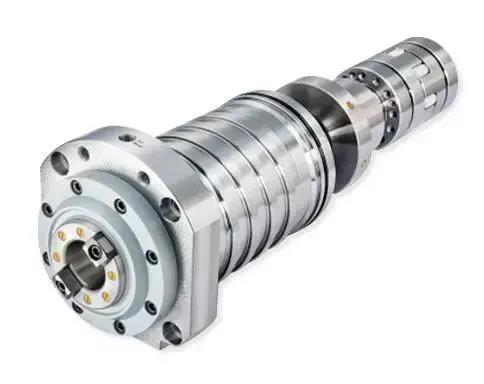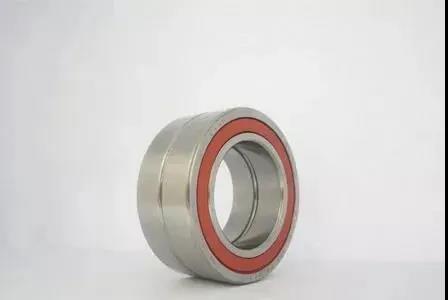Industrial Lubrication|Machine Tool Spindle Bearing Lubrication
February 16, 2022
Machine tool spindle bearing is the spindle bearing of precision machine tools and similar equipment, which ensures the working accuracy and performance of precision machine tools. The correct configuration of the spindle bearing refers to the combination of bearing types and the arrangement of the front and rear bearings. Different configurations determine the different load capacity, running speed, stiffness, temperature rise and service life of the machine tool spindle. In particular, the impact on stiffness and temperature rise is more significant, so the spindle bearings should be reasonably configured according to the requirements of the machine tool's working characteristics. In terms of function and structure, spindle bearings can be divided into two categories: rolling bearings and sliding bearings.

The purpose of the running-in operation is to make the rollers and the raceway pass through the running-in before the bearing is officially turned, so as to have good contact conditions, so as to keep the bearing with good contact accuracy, and to avoid the bearing at high speed and high speed at the beginning. Heavy-duty use will cause damage to the rollers and raceways, thereby improving the life and accuracy of the bearing. Because tapered roller bearings are not in complete rolling contact, there is sliding between the end face of the roller and the shoulder of the inner ring. If the contact conditions are not good, the phenomenon of occlusion damage is easy to occur, so more attention should be paid to the running-in operation of this type of bearing. The mechanical spindle refers to the axis on the machine tool that drives the workpiece or tool to rotate. Main shaft components are usually composed of main shaft, bearings and transmission parts (gears or pulleys). In the machine, it is mainly used to support transmission parts such as gears and pulleys, to transmit motion and torque, such as machine tool spindles; some are used to clamp workpieces, such as mandrels. Except for machine tools whose main motion is linear motion, such as planers and broaching machines, most machine tools have spindle components. The motion accuracy and structural rigidity of the spindle components are important factors that determine the machining quality and cutting efficiency. Performance Comparison of Spindle Bearing Types Spindle bearing is an important component in the spindle of CNC machine tools. In the process of spindle transmission, it can play the role of supporting the rotation of the mechanical body and reducing friction. Bearings will have a direct impact on the working performance of spindle components due to their different types, structures, configurations, and accuracy, as well as the degree of installation and adjustment. In terms of function and structure, spindle bearings can be divided into two categories: rolling bearings and sliding bearings. Sliding bearings can be divided into hydrodynamic bearings and hydrostatic bearings according to the way they generate oil film pressure.

Rolling bearing rotation accuracy is average or better, and may be high when operating without clearance or preload. The stiffness is average or better, only related to the bearing type, as is the load carrying capacity. The vibration resistance performance is poor, and the low and medium speed performance is good. At high speed, it is limited by factors such as fatigue strength, centrifugal force, and temperature rise. The friction loss is small, the noise is large, and the life is limited by the fatigue strength. The production, use and maintenance are relatively simple, and it has been standardized and serialized, and can be mass-produced at low cost. The rotational accuracy of hydrodynamic bearings is general, but the accuracy retention is good. Rigidity and load-carrying capacity are high and increase with speed and load. Good seismic performance, good performance at medium and high speed, no oil film can be formed at low speed, no bearing capacity, ultra-high speed is limited by temperature rise. Low friction losses, no noise, and long life without frequent starts. The production cost is low, but the process requirements are high, and it needs to be self-made by the factory, and the use and maintenance are also more troublesome. The hydrostatic bearing has high rotation accuracy and good retention. The rigidity and bearing capacity are very high, independent of the speed and load, and related to the throttling form and the relative pressure difference of the oil chamber. Excellent seismic performance, suitable for various operating speeds, especially low-speed and ultra-high-speed operation. Frictional losses are small, no noise, and a very long life. In addition to its own cost, it also needs a set of oil supply equipment, so the total cost is high, and the production process requirements are also high. When choosing the type and combination of bearings used, the requirements of the main shaft components in all aspects, as well as the supply of bearings, cost, and difficulty of installation and debugging should be comprehensively considered. In general, rolling bearings should be preferred for spindles, especially for vertical spindles, sliding bearings are only used when the spindle is placed horizontally and the surface roughness of the workpiece is small.
Lubrication of spindle bearings
1. The order of filling grease after bearing cleaning Depending on the grease filling method, unstable temperature rise during the initial running-in operation, abnormal temperature rise, long initial running-in time, and even burns may occur. Therefore, it must be properly filled with appropriate grease and appropriate filling amount according to the conditions of use. (1) Confirmation items before filling Confirm that there is no residual foreign matter inside the bearing. It is recommended that bearings for high-speed spindles should be cleaned, degreased, and then filled with grease. For other applications, it is also recommended to remove the anti-rust oil adhering to the inside of the bearing first. (2) When filling with grease To fill the proper amount of grease, a greaser is recommended. It is best to use a greaser that uses a readable fill number. (3) Grease filling amount Recommended value of precision bearing grease filling amount: Angular contact ball bearings for high-speed spindles, 15% ± 20% of the space volume Cylindrical roller bearings for high-speed spindles, 10%?% of the space volume Ball bearing for motor, 20%~-30% of space volume 2. Grease filling method for ball bearings (1) Fill grease evenly between the balls. In the case of a phenolic resin cage guided by an outer ring, it is recommended to apply grease thinly to the guide surface of the cage. (2) Rotate the bearing by hand so that the grease enters the raceway surface, the inside of the cage, between the balls, and the guide surface evenly, so that the grease fills the inner space of the bearing. 3. Grease filling method for cylindrical roller bearings (1) Apply 80% of the filling amount of grease evenly on the rolling surface of the roller. At this time, it is recommended not to apply too much grease to the inner side of the cage. The grease inside the cage is difficult to spread in the initial running-in stage, which will increase the temperature and prolong the running-in time. (2) The grease on the roller raceway surface will spread to the end face of the roller, the contact part between the cage and the roller, and the entrance of the pocket part, so that the grease is evenly distributed to the entire bearing. (3) Apply 20% of the grease evenly and thinly to the outer ring raceway surface to be installed in the bearing seat.







